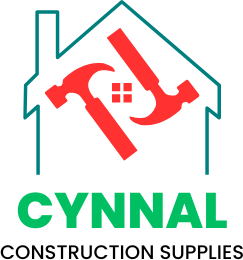Understanding Types of Valves and Their Applications in Plumbing

Understanding Types of Valves and Their Applications in Plumbing
When working on plumbing systems, choosing the right valve can be the difference between a reliable, easy-to-maintain setup and ongoing issues. Valves are vital components that control the flow of water, gas, or other fluids within pipes, allowing for regulation, shut-off, or diversion.
As DIYers, builders, or professional tradespeople, understanding the different types of valves and their specific applications enables you to select the most suitable components for your projects. This comprehensive guide will walk you through common valve types, their uses, and practical tips to help you maintain a robust plumbing system.
Why Understanding Valves Matters in Plumbing
Valves are more than just turn handles; they are precision tools designed to manage fluid flow effectively. Using the wrong type of valve can lead to leaks, reduced flow efficiency, or system failure. Recognising the differences ensures safety, durability, and ease of maintenance crucial for both new installations and repairs.
Common Types of Valves in Plumbing
1. Ball Valves
Overview
Ball valves are popular for their reliable sealing and quick operation. They consist of a spherical disc (the ball) with a hole through it, which aligns with the pipeline to open or close flow.
Application
Ideal for on/off control in water supply lines. Frequently used in domestic plumbing, gardening, and industrial settings where a quick, secure shut-off is required.
2. Gate Valves
Overview
Gate valves function by lifting a metal gate out of the path of the fluid. They are meant for fully open or fully closed states, not intermediate positions.
Application
Commonly installed in main water lines or where a full flow is needed without pressure loss. Not suitable for frequent operation or throttling.
3. Butterfly Valves
Overview
Featuring a rotating disc that acts as a barrier, butterfly valves are compact and lightweight.
Application
Suitable for large-volume water systems and where space-saving solutions are necessary. Theyre often used in HVAC and industrial applications.
4. Pressure-Reducing Valves
Overview
Designed to lower the pressure within a system, these valves automatically regulate flow to prevent damage from excessive pressure.
Application
Essential for protecting appliances and piping in areas with high-pressure water supplies.
Discover pressure-reducing valves
Choosing the Right Valve for Your Project
Consider Your Fluid
The type of fluid (water, gas, corrosive substances) affects material selection. For example, stainless steel valves resist corrosion better.
Determine Flow Requirements
Flow rate and pressure dictate the size and type of valve needed. Always match the valve specifications to your system.
Ease of Operation
Manual or automated? Choose based on accessibility and frequency of use.
Connection Method
Threaded, soldered, or flanged? Ensure compatibility with your existing pipework.
Practical Tips for Maintenance and Troubleshooting
- Regularly inspect valves for leaks or corrosion.
- Lubricate moving parts as recommended by manufacturers.
- Replace worn or damaged valves promptly to prevent system failure.
- Keep spares of commonly used valves to minimise downtime.
Comparing Typical Valves for Common Plumbing Needs
| Feature | Ball Valve | Gate Valve | Butterfly Valve | Pressure-Reducing Valve |
|---|---|---|---|---|
| Main Use | Quick shut-off | Fully open/close | Large volume | Pressure regulation |
| Operation | Quarter-turn | Handwheel | Quarter-turn | Automated |
| Size Range | 15mm 100mm | 25mm 300mm | 50mm 2000mm | 15mm 50mm |
| Pros | Seals tightly, easy to operate | Reliable for shut-off | Compact, space-efficient | Protects system, durable |
| Cons | Not suitable for throttling | Slower operation | Less precise flow control | More expensive |
(Note: This table is structured following schema.org conventions for semantic clarity)
Final Thoughts
Selecting the right valve enhances both the functionality and longevity of your plumbing systems. Whether you're installing new pipework or replacing worn-out components, understanding the specific applications and features of each valve type ensures safe, reliable, and efficient operation.
For any plumbing project, always ensure the components are compliant with UK standards and fit your precise needs.
Ready to get started?
Explore our selection of plumbing valves to find the right solution for your DIY or professional project. Proper valve selection and maintenance are key to maintaining a well-functioning plumbing system.
Maintaining an understanding of your plumbing components is essential for all hands-on users committed to 'cyneil' their systems effectively. Whether fixing a leaking tap or upgrading an entire pipeline, using the right valves makes all the difference. Happy maintaining!